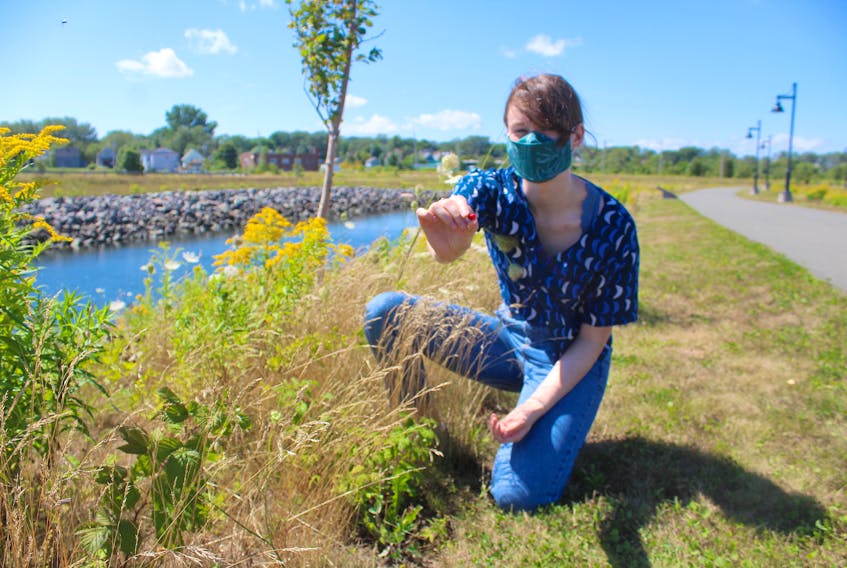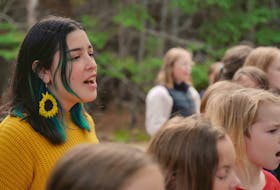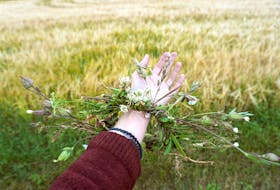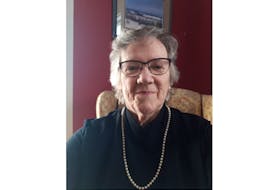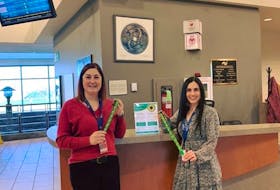SYDNEY, N.S. — You don’t have to go to the grocery store or even start a garden to get fresh food, thanks to a Cape Breton University project that is searching out wild edible plants then posting their locations on an interactive online map.
Clara Reynolds-White, a bachelor of arts and science in environment student, spent this summer travelling to parks, beaches and other public spaces looking for food people can find and forage for free by visiting the Falling Fruit website.
And while she’s added the locations of plenty of fruits and berries — a raspberry patch along the tracks by Sydney harbour, blackberries in Petersfield Provincial Park and along Greenlink Trail, even a plum tree in Open Hearth Park — many of the 240 entries include plants people don’t traditionally consider as food.
“When I first started all of this I really was thinking I was going to be logging blueberries and strawberries around the island, but pretty much everywhere I go I’m guaranteed to find colt’s foot and plantain and all these things I previously thought of as weeds or these green leaves that I overlooked,” Reynolds-White, 19, said during a walk around Open Hearth Park in Sydney with professor Leigh Potvin.
And it wasn’t long before she began pointing some of the things growing inches from the concrete pathway.
“This is wild carrot. The root is edible. This goldenrod is edible, there’s strawberries all around. It’s really cool how abundant everything is but it just kind of goes unnoticed.”
Potvin, a professor in the department of experiential and community studies, is a CBU research chair in equity and food justice. She said adding the location of edible plants to Falling Fruit, a non-profit project based in the U.S., is the first step in a three-year initiative to address food security in Cape Breton. Eventually, they plan to create community gardens across the island and teach teams of volunteers how to plant, grow and harvest their own food.
“This Falling Fruit website that Clara has been populating really gives people the opportunity to bring food into their home without having to go to a store or having to grow it themselves,” she said. “I think this is powerful because as an individual, in your own home, you can dismantle a system by picking a bunch of blueberries or picking a bunch of mint, drying it and using that as your tea. This really lets people not view food as a commodity but food as something that we don’t necessarily have to pay money for but is available in our communities.”

Potvin noted that people should only eat plants they can identify. They should also leave enough behind for other people and the future of the crops.
“We want to advocate people not going somewhere and picking everything they can see. First of all, it’s not being a good neighbour, but second of all, for things like fiddleheads or other crops like that, if you take all of the fern you can destroy that,” she said, adding that people also need to ask for permission if they’re planning to pick food on someone’s private property.
She encouraged other people to add their own entries on Falling Fruit.
“We’re trying to build food resilience in Cape Breton, so if you know on your street or in your backyard there’s something growing, people should put it on the website.”
Picking food that grows in your neighbourhood can also help the planet.
Reynolds-White said a project she worked on last year examined how far our food travels before reaching our dinner tables and how food production affects climate change.
“I was doing a lot of buying local at farmers' markets but the thing about that is not everyone can access that — it’s a lot more expensive and it’s also not in every area,” she said. “I think foraging is a great way to reduce your carbon footprint when it comes to your food consumption.”


